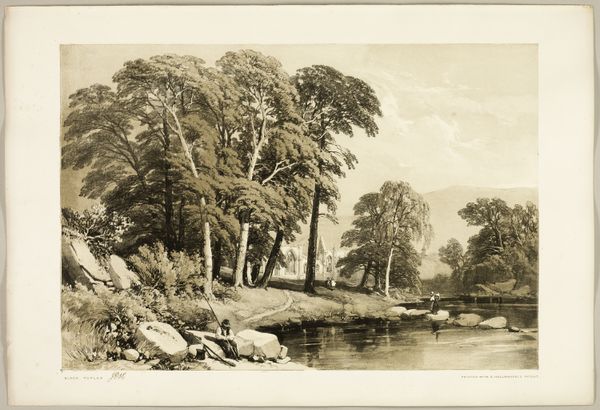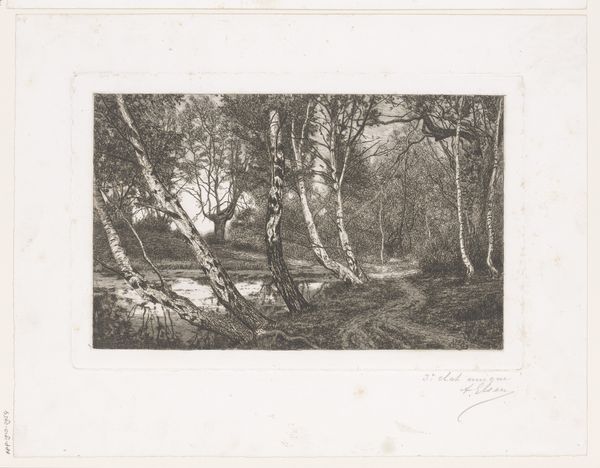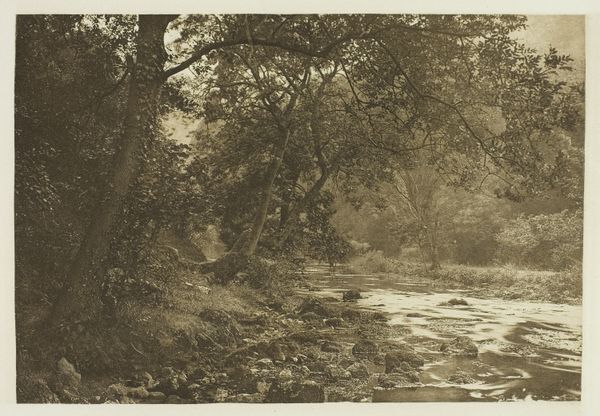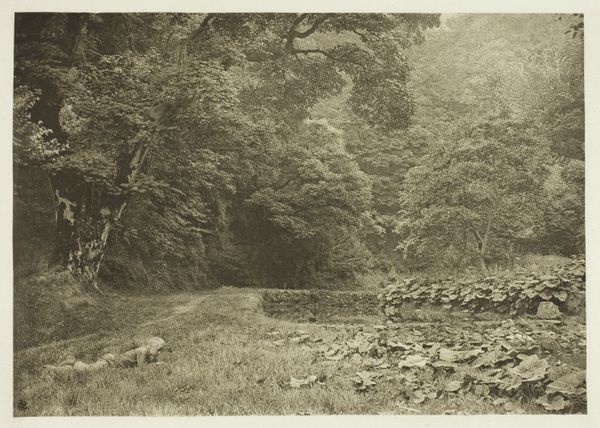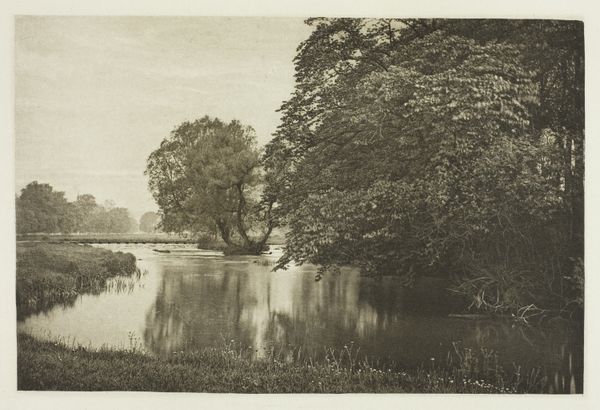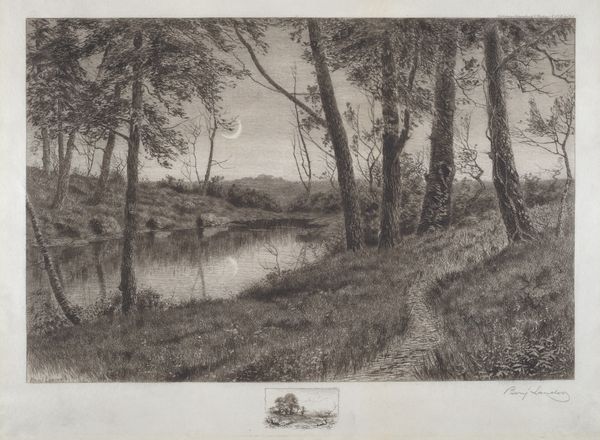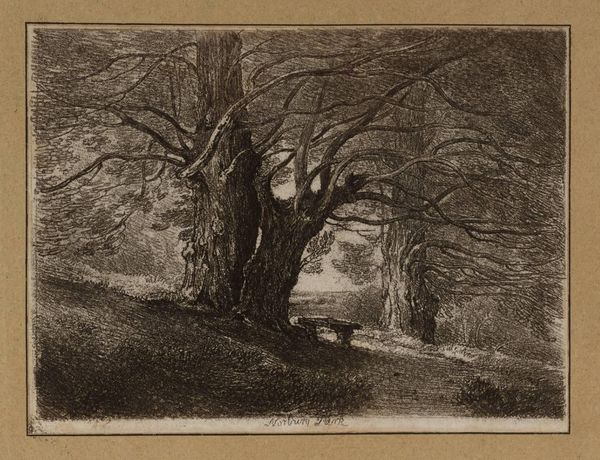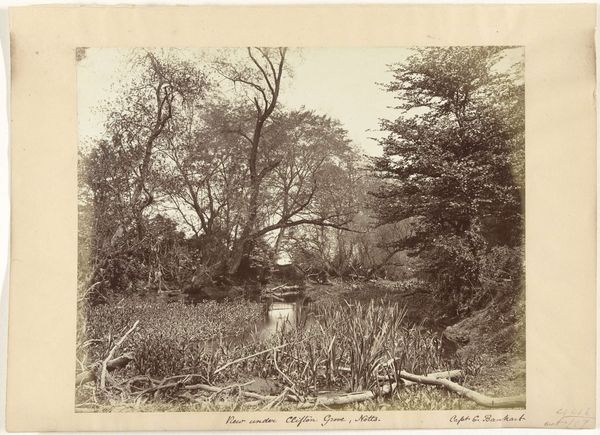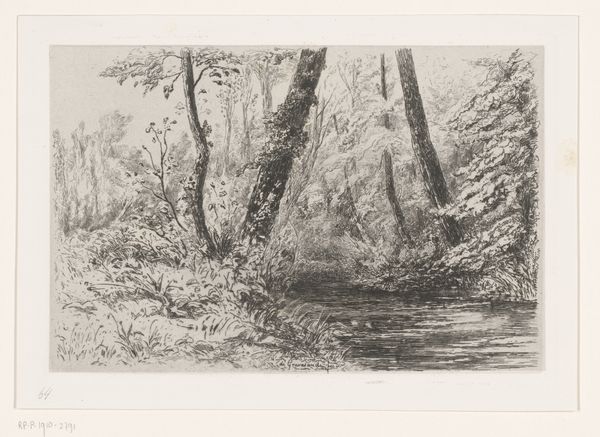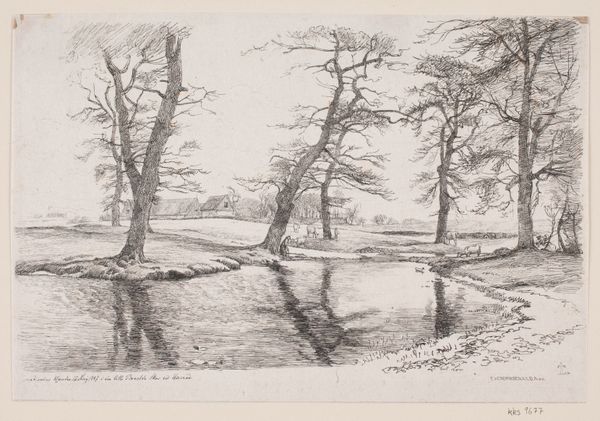
Dimensions: 160 mm (height) x 268 mm (width) (billedmaal)
Curator: We are looking at "Et stille vand i Dyrehaven," which translates to "A Quiet Water in Dyrehaven," an etching created by J. Hildebrand in 1885. It's part of the collection at the SMK, the National Gallery of Denmark. Editor: It feels intensely… worked. Look at the density of the lines. You can almost feel the labor that went into creating this rich, detailed image of the forest and the still water. Curator: The detail is indeed remarkable. As a landscape, it really encapsulates the Romantic movement's fascination with nature, and also aligns with a prevailing interest in rendering national landmarks during the late 19th century. Dyrehaven, a royal hunting park, carries a certain societal weight. Editor: I wonder about the availability of this image. As a print, it suggests wider distribution, beyond elite circles. This means a lot of people could engage with, and arguably "own", this idealized vision of Danish nature through their personal ownership of this reproduced image. Curator: Precisely. The medium facilitates a wider cultural dialogue, disseminating this constructed idea of Danish identity connected to the land, shaping a sense of shared cultural heritage across different social classes through affordable images of national treasures. Editor: Let’s consider Hildebrand’s labor. How much did technique serve or challenge this societal pressure you mentioned? I'm struck by the intricate hatching. It gives it a beautiful texture but what does it cost? Time and materials, demanding skilled labor. Is there a connection between craft and value in defining what this "Danish nature" is? Curator: Certainly. Hildebrand's technical prowess enhances the value of the scene. The Romantic era relied heavily on evocative depictions. This print uses line and tone to establish this park as a place of contemplation. Editor: So, essentially, we're looking at the making of a landscape that has become a symbol through this material, and this circulation – where both place and image reflect and construct each other. Curator: Absolutely. By framing a scene with certain trees in certain lights reflected a specific Danish self-perception and ideal. Editor: The more I examine it, the more the layered detail highlights a real crafting of the natural image in Danish society. Curator: I concur. It all reveals how imagery can shape cultural narratives.
Comments
No comments
Be the first to comment and join the conversation on the ultimate creative platform.

